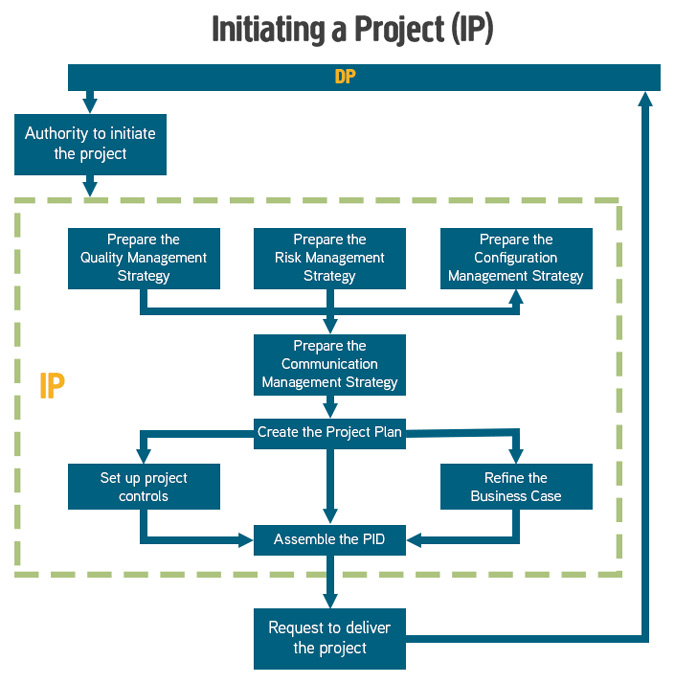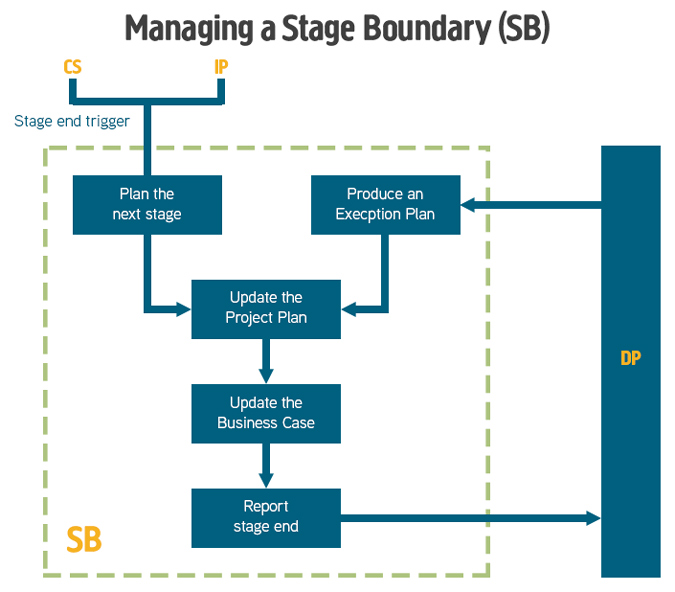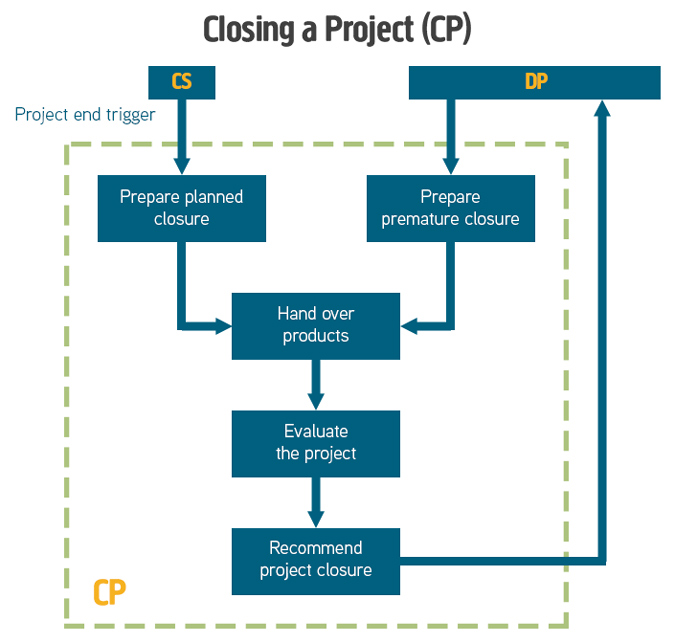PRINCE2® PROCESSES – Initiating a Project (IP)

See our training for PRINCE2.
The purpose of the Initiating a Project process is to establish solid foundations for the project, enabling the organisation to understand the work that needs to be done to deliver the project’s products before committing to a significant spend.
The objective of the Initiating a Project process is to ensure that there is a common understanding of:
- The reasons for doing the project, the benefits expected and the associated risks
- The scope of what is to be done and the products to be delivered
- How and when the project’s products will be delivered and at what cost
- Who is to be involved in the project decision making
- How the quality required will be achieved
- How baselines will be established and controlled
- How risks, issues and changes will be identified, assessed and controlled
- How progress will be monitored and controlled
- Who needs information, in what format, and at what time
Other products created and ready for use when the project commences are:
- Risk Management Strategy and Risk Register
- Configuration Management Strategy, Initial Configuration Item Records and Issue Register
- Quality Management Strategy and Quality Register
- Communication Management Strategy
- Project Controls
- Role Descriptions
- Project Management Team Structure
- Project Plan
- Product Descriptions
- Benefits Review Plan
- Detailed Business Case
- Project Initiation Documentation
Andy Trainer
12 Jul 2007
PRINCE2® PROCESSES - Managing a Stage Boundary

The purpose of the Managing a Stage Boundary process is to enable the Project Board to be provided with sufficient information by the Project Manager so that it can review the success of the current stage, approve the next Stage Plan, review the updated Project Plan, and confirm continued business justification and acceptability of the risks. Therefore, the process should be executed at, or close to the end of, each management stage. The PRINCE2 Processes are covered in detail on our PRINCE2 Foundation training and PRINCE2 Practitioner training courses.
The objective of the Managing a Stage Boundary process is to:
- Assure the Project Board that all products in the Stage Plan for the current stage have been completed and approved
- Prepare the Stage Plan for the next stage
- Review and, if necessary, update the Project Initiation Documentation (in particular the Business Case, Project Plan, project approach, strategies, project management team structure, and role descriptions)
- Provide the information needed for the Project Board to assess the continuing viability of the project – including the aggregated risk exposure
- Record any information or lessons that can help later stages of this project and/or other projects
- Request authorization to start the next stage.
The main products of this process are as follows:
- An End Stage Report produced by the Project Manager and given to the Project Board, outlining information on the current stage achievements.
- Current Stage Plan actuals showing the performance against the original Stage Plan.
- The Next Stage or Exception Plan for approval.
- Project Initiation Documentation may require updating.
- A revised Project Plan incorporating all the actual metrics.
- An updated Risk register, together with the Updated Business Case and Project Plan, which is used by the Project Board to review that the Project has continuing ongoing viability.
- Configuration item records created/updated for new stage products.
- An updated Business Case.
- The Lessons Log.
- Any changes to the Project Management Team with updated Job Descriptions.
Team plans may also be produced when planning the next stage, defining the work packages that will be produced in the next stage.
Andy Trainer
12 Jul 2007
The Plans theme is fundamental to the PRINCE2® methodology - the other themes (business case, organisation, quality, risk, change and progress) all depend on effective planning before, during and even after each project. A good plan will facilitate communication and control throughout the whole project life cycle.
Effective and structured planning also ensures that everyone involved in the project has the same information to work from and refer to. Crucially, in PRINCE2, all plans are created on a product-based technique – the final objective is identified first and then the plan is made of how to deliver this product.
Our PRINCE2 courses cover all of the PRINCE2 themes in detail, with a focus on real-life application of this knowledge.
The Planning Horizon
PRINCE2 can be applied to all scales of project, but detailed planning can be difficult for lengthier projects. If this is the case, the project will be broken down into smaller stages, and each of these will have separate plans. The planning horizon is the agreed length of time for which it is appropriate – or possible – to plan in detail.
Contents of PRINCE2 Plans
The different types of plans in a PRINCE2 project will follow a similar structure, in order to be easily accessible to everyone involved in the project. The level of detail that goes into each level of plan is determined by the scale of the project.
Andy Trainer
20 Jun 2012
PRINCE2® PROCESSES – Closing a Project (CP)

See our courses for PRINCE2.
The purpose of the Closing a Project process is to provide a fixed point at which acceptance for the project product is confirmed and to recognize that objectives set out in the original Project Initiation Documentation have been achieved (or approved changes to the objectives have been achieved), or that the project has nothing more to contribute.
The objective of the Closing a Project process is to:
- Verify user acceptance of the project’s products
- Ensure that the host site is able to support the products when the project is disbanded
- Review the performance of the project against its baselines
- Assess any benefits that have already been realized, update the forecast of the remaining benefits, and plan for a review of those unrealized benefits
- Ensure that provision has been made to address all open issues and risks, with follow-on action recommendations.
The main products of this process are as follows:
- Project Plan updated with final actual
- Product Status Account covering the status of all products for the project
- Issue register to identify any outstanding issues
- Follow-on action recommendations created with any outstanding issues to be addressed
- Configuration item records updated with current status of products
- Benefits review plan updated with dates for benefits realization
- Acceptance records for products completed
- End project report created
- Lessons Report created
- Close Issue, Risk, Quality registers, Daily and Lessons Log
Andy Trainer
12 Jul 2007